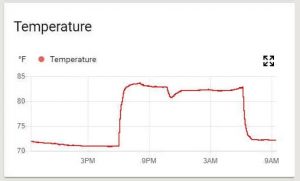- Skin damage
- Eye damage
- Respiratory damage
- High voltage power
- Fire hazards
- Water hazards
- Chemical spills
- Environmental contaminants
- Moving parts
- Theft
- Insect Damage
- Toxic mold and or fungus
Growing indoors can be extremely fun and rewarding, but if not paying attention or not planning properly it can be DANGEROUS too!
Don’t fool yourself into thinking that growing a plant is completely harmless! It takes a lot of energy and materials to produce plants indoors. in not designed correctly can actually damage your grow space. Because we are replicating an outside environment artificially indoors you need to have an indoor environment ready to be exposed to all of the growing elements. This combination of water, electricity, hot lamps, ,humidity, various chemicals to name a few. Mixed with moving parts like fans, pumps, or light movers combined with tight spaces can create a hazardous environment quickly if not well cared for. A good rule of thumb is “better safe than sorry”.
The Process:
- Plan ahead! Plan your electrical load and routing of cables to be clean, uncovered out of the way and secured. Seal all windows with light proof material as you do not want light affecting the night cycle. Make sure you have access to drains, water and proper electrical.
- Make sure the ground surface of the space intended to grow is waterproofed. Water destroys floors quickly and efficiently.
- Keep all electrical components (other than water pumps) above waist level.
- Never use frayed or split extension cords. The risk of shock of fire is too great.
- Keep all vent inlets and outlets completely open and clear. Use a secured inlet filter if possible.
- Use protective glass when necessary and use protective clothing to guard skin from UV radiation. UV rated masks can be easily found on amazon or ebay and gloves will keep your knuckle hairs from ending up in or on your plant. There are indoor Garden specific glasses from many vendors online as well. I have used a few and they all seem the same so if it is UV rated, green lens, it should be good. I go with the grandpa style ones for more face coverage from the lamps.
- Keep all nutrient containers upright, on a shelf or in a bin and clean up any spill immediately. You don’t want to take off paint with your PH down that got sprayed on the wall… dispose of empty bottles appropriately.
- Fan blades spin very fast. They don’t care what your hair thinks, or your fingers, or your pet bird. Plan on that.
- Your neighbors kid might be interested in why their back yard stinks, or about the god of light coming from your basement windows. Keep it quiet doesn’t just mean don’t talk about it, it also means don’t let any of it be seen. Many outdoor crops in my neighborhood went missing last year right BEFORE harvest… a waste of plants for anyone including the no-nothing thief. But if someone was willing to venture onto my neighbors back yard, whats to stop them from going into known basement grow? Leave nothing out or behind, do not keep anything around that indicates any indoor growing. USE AIR FILTERS!! I cannot express this enough. Every person, car, cat, mouse etc will know you grow smelly things if you don’t. Just use a filter. Move things in and out under darkness, or by garage only and don’t share too much with unknown people in your neighborhood. You do not need to arouse suspicion unless you want the added problems that will come along.
- Keeping a properly de-humidified environment both in and out of your growing area is a must. If improperly treated, humid air can move up into your attic space and create the perfect environment for mold. You do not want to ruin your home over an indoor garden, so make sure to either vent out of your grow space into the outdoors or treat the air with a dehumidifier. It helps to have a dehumidifier with a drain hose attachment and floor drain nearby if you plan on running the dehumidifier 24/7 so you do not “forget” to empty the bucket as it will shut down when full and spike your humidity. We have seen this happen very fast using the My Smart Grow graphing data as we have tested it with a variety of setups and found that the hose to floor drain is the best for a medium room to keep safe humidity levels throughout an entire grow cycle. High humidity will also wear electrical contacts by promoting rust.
- Keep an eye out for insects that may find their way into your moist dark environment. I have seen ant’s make a hive in a hydroton potted mother due to a ventilation duct to the outside letting them in. Seal off any possible entry with foaming sealing insulation and treat the outside of your building around vents to keep insects at bay.
- Be safe and enjoy!

